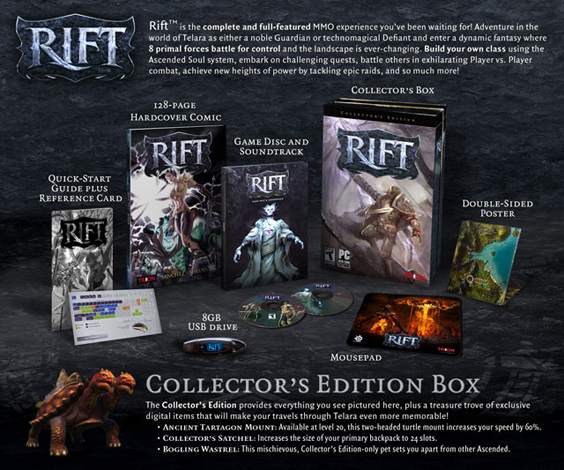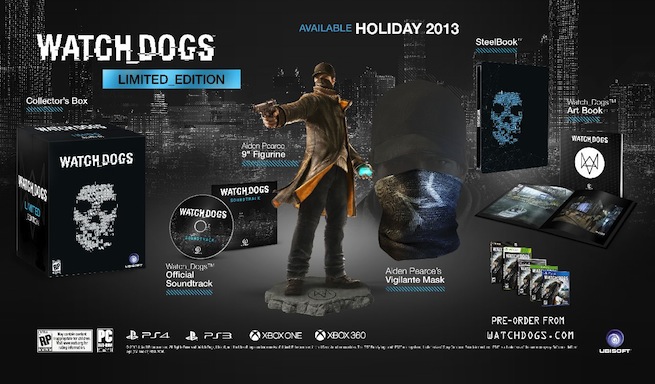Whatever you call them — special, limited, elite, premium — the “game that comes with other stuff” is here to stay. Increasingly, developers and publishers are asking players the following question: “Why just buy a game when you can buy a game, a soundtrack, a statue, a shirt, a keychain, and some stickers, all inside of a special box you can’t get anywhere else?” And recently, they’re even offering superfan editions for new franchises that can’t possibly have superfans yet.
A while ago, we counted down the 18 most expensive special editions ever created (at that time, anyway). Seventeen of the bundles on that list were from established franchises — four of them were from developer Capcom’s Resident Evil series of survival-horror games. But one stood alone. The “Signature Edition” of the now-defunct 38 Studios’ Kingdoms of Amalur: Reckoning was the sixth most expensive game on that list, and it was the only one that wasn’t a sequel.
This year alone, we’re going to see at least three brand-new properties, like Watch Dogs’ $130 Limited Edition above, receive the big-box treatment, and this got us to thinking: Why would gamers throw down more than twice the normal price for a game in an unproven series? And how do developers and publishers go about creating these versions if they don’t know what’s going to interest people yet?
Let’s start with the people who make these things.
The publishers
We wouldn’t have extra-bonus versions of games if developers, publishers, and their respective marketing departments didn’t think they could sell them, so we reached out via e-mail to a couple developers who have put out first-go bonus boxes to see what the process was like. First up: Dennis Lee, publisher Namco Bandai’s director of marketing. He’s one of the people who brought us the Wizard’s Edition for developer Level 5’s PlayStation 3-exclusive role-playing game, Ni No Kuni: Wrath of the White Witch.
“There’s definitely higher risk involved with offering a special edition for an untested franchise,” Lee told GamesBeat over e-mail. “But this is where community and social media can help by giving us a barometer of how excited gamers are for a new gaming property. There’s also a fair amount of industry experience that plays into making the correct call, and being a gamer myself helps the decision-making process as well.”
As far as what to include in the special edition: “You want to offer something compelling that makes sense for the game and which fans are going to talk about and love. We look at the essence of a title and see what stands out, and then we see which items can be created based upon that essence, be it a character, a weapon, or showing off content like artwork or the music that’s in the game.”
Ni No Kuni’s Wizard’s Edition included a full-size replica of the in-game spell book, and it proved so popular that the publisher oversold presells. That didn’t stop one ingenious fan from making his own from scratch, so it looks like that one went over alright.
We also heard from Jim Butler, the director of global brand for Trion Worlds. Its massively multiplayer online role-playing game Rift launched with a Collector’s Edition that included, among other things, a 128-page comic book and an 8GB game-branded USB drive.
“The first thing you have to accept as a marketer is that there’s never a guaranteed thing; even successful franchises have follow-ups that fail,” Butler said. “We take a look at core features that are of interest to consumers and build offerings around them. Sometimes, that means we have multiple offerings — Standard, Deluxe, Collector’s, etc. — and other times, it just means a single offering of awesomeness. The consumer is the primary driver of everything we do.
“We have secondary drivers, of course. Walmart might want something special for their stores that consumers can’t get anywhere else. For Rift, we created the Shambler Pet as an exclusive offering to Walmart customers.”

Above: The Collector’s Edition Box for Rift.
And how do they decide what to give players?
“For digital products, it’s mostly about creating a value package for hardcore gamers that want to go ‘all-in’ on the game,” Butler continued. “For Collector’s Editions that are shipped to retail, there are additional considerations. How long is the production lead time? How much does it weigh? How much does it cost? Is this something that gamers are going to put next to their computer/console and think about the title all the time? How much use/value will this item bring to them?
“If a game has a unique art style, then an art book might be in order. Iconic monsters might warrant a statue. USB, mouse, keyboard … the list goes on and on. And while we’re all gamers and like to think we know what regular gamers want, we also do market research to find out what additions would be most valuable.”


